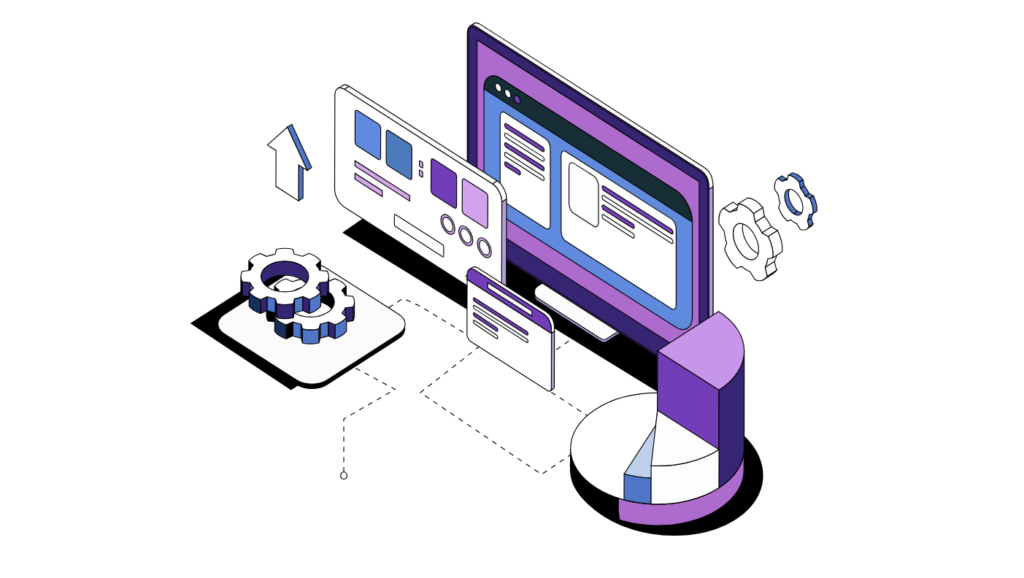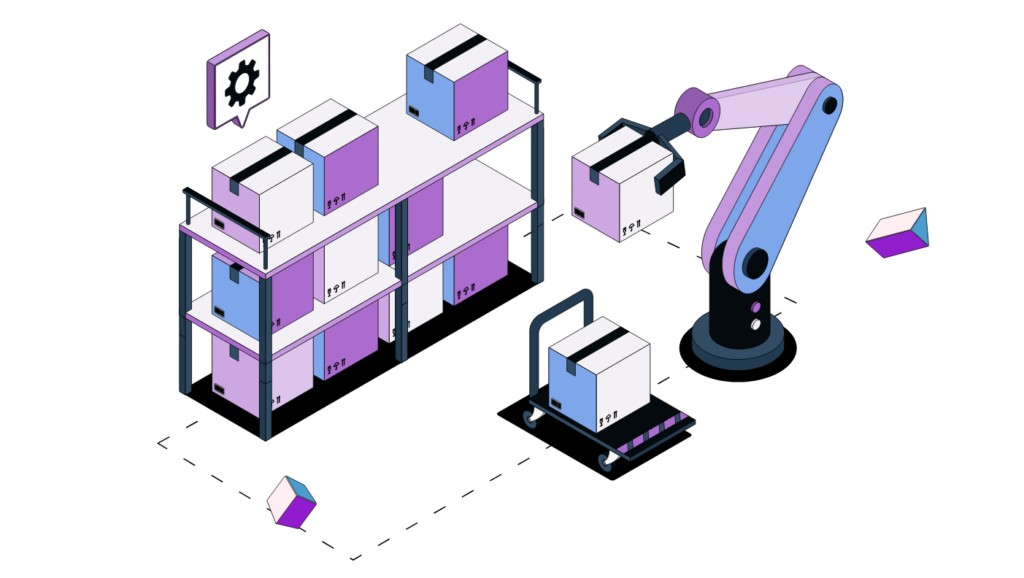Harnessing the Power of Digital Twins for Smarter Warehouse Management
As we navigate through 2025, the landscape of supply chain management continues to evolve rapidly. One of the most significant advancements is the increasing adoption of digital twins, a technology...
On April 28, 2025

As we navigate through 2025, the landscape of supply chain management continues to evolve rapidly. One of the most significant advancements is the increasing adoption of digital twins, a technology that allows organizations to simulate their entire supply chain and warehouse operations in a virtual environment. For those in charge of operations, labor management, and inventory optimization, digital twins are quickly becoming a critical tool for enhancing efficiency and mitigating risks.
In this post, we’ll dive into why digital twin adoption is growing, how it impacts operations, and how you can leverage this technology to boost your labor productivity and improve efficiency.

What is a Digital Twin and Why Does it Matter?
A digital twin is a virtual representation of a physical asset or process that allows warehouse managers to create accurate simulations of their entire operation. These simulations are powered by real-time data, giving you a comprehensive view of your warehouse’s performance.
By creating a digital replica of your warehouse, you can test various scenarios. Whether it’s adjusting labor workflows, forecasting inventory needs, or optimizing labor hours. The key advantage of a digital twin is the ability to simulate these changes without disrupting actual operations. This makes it a powerful tool for decision-making in real time.
Never miss a story. Stay updated about Rebus news as it happens.
The Growing Importance of Digital Twins in Supply Chain
In today’s fast-paced and unpredictable supply chain environment, there is an increasing need for technologies that can improve agility and reduce risks. Digital twins provide just that by offering a clear, real-time view of operations, enabling businesses to respond swiftly to disruptions. Here are a few reasons why digital twin adoption is becoming essential for modern warehouses:
- Risk Modeling
Digital twins allow you to simulate potential risks, such as extreme weather conditions, changes in tariffs, or sudden labor shortages. This proactive approach helps warehouse managers identify bottlenecks and adjust workflows or inventory management strategies before a disruption occurs. - Cost Optimization
With real-time data inputs, digital twins help pinpoint inefficiencies in warehouse operations. For example, by simulating various labor scheduling scenarios, you can identify areas where labor productivity can be improved, potentially reducing labor costs without sacrificing performance. - Improved Decision-Making
Digital twins enable more agile decision-making by providing actionable insights. In warehouse environments, where labor and inventory fluctuations can significantly impact operations, having the ability to adjust labor management, inventory levels, and workflows in real time can prevent costly mistakes. - Enhanced Labor Management
By integrating labor management systems (LMS) with digital twins, warehouse managers can optimize labor hours and resource allocation. Whether you need to predict labor demands or adjust shifts in response to unexpected changes, digital twins offer a seamless way to make these adjustments without operational downtime.
The Role of Predictive Analytics and Labor Management
Digital twins work hand-in-hand with predictive analytics to offer actionable insights that help manage labor workflowsmore efficiently. Predictive analytics processes large amounts of historical data, identifying trends and patterns that inform labor scheduling decisions. By integrating these insights with digital twin simulations, you can forecast labor requirements with greater accuracy, reducing overstaffing or understaffing issues and improving overall labor productivity.
Furthermore, digital twins can simulate different labor management scenarios based on factors like demand fluctuations, seasonal trends, or changes in order volume. This means that managers can be proactive in adjusting labor plans to ensure that teams are allocated effectively, reducing unnecessary labor hours and improving operational efficiency.
Digital Twins and Inventory: A Synergistic Relationship
Inventory management is another critical area where digital twins are making a big impact. By creating a digital model of your warehouse, you can simulate inventory flow, monitor stock levels, and predict inventory needs—all in real time. This integration helps prevent overstocking or stockouts, ensuring that your inventory is always at optimal levels without tying up unnecessary resources.
Warehouse analytics can provide insights into how inventory is moving through the system, allowing for more precise forecasting. With this information, you can adjust workflows, labor deployment, and inventory management practices to maximize warehouse efficiency. This continuous feedback loop ensures that inventory is managed effectively, reducing waste and improving stock turnover.

Overcoming the Challenges of Adoption
While the benefits of digital twins are clear, there are challenges that come with their adoption. One of the biggest hurdles is ensuring data accuracy. Digital twins rely on clean, real-time data from the warehouse to function properly. Without accurate data, the simulations they produce could lead to poor decision-making, undermining the technology’s effectiveness.
Warehouse managers need to prioritize data harmonization to ensure that all systems—from inventory management to labor management systems—are providing accurate and synchronized data inputs. A unified data strategy will enable you to leverage digital twins to their full potential, ensuring that the simulations and insights they produce are reliable.
Additionally, integrating digital twins with existing warehouse systems, such as Labor Management Systems (LMS), can require a significant upfront investment in both time and resources. However, the long-term benefits in terms of improved labor productivity, reduced risks, and better decision-making make digital twin adoption a worthwhile investment.
Digital Twin Adoption in Cybersecurity: Protecting Your Virtual Environment
As more warehouse operations become digitized, the importance of cybersecurity grows. Digital twins, by their very nature, involve the collection and analysis of sensitive operational data. This makes them a potential target for cyber-attacks if not properly secured. To protect your digital twin simulations, it’s essential to integrate robust cybersecurity measures that safeguard both the data inputs and the digital models themselves.
By investing in AI-driven threat detection and secure cloud platforms, you can mitigate the risks associated with digital twin adoption and ensure that your virtual environment is as safe as your physical one.
Conclusion: Future-Proofing Operations with Digital Twins
As supply chain operations continue to grow more complex, digital twin technology is proving to be an invaluable asset for warehouse managers. By offering the ability to simulate various scenarios, optimize labor and inventory management, and predict future disruptions, digital twins are empowering warehouses to operate more efficiently, reduce costs, and make data-driven decisions in real time.
The future of warehouse operations will be shaped by technologies like digital twins, which enable predictive planning and real-time optimization. For businesses looking to stay ahead of the competition, investing in this innovative technology will be key to future-proofing their operations.
By integrating Labor Management Systems, warehouse analytics, and inventory management tools with digital twin technology, warehouse managers can achieve a level of operational efficiency and agility that was previously unimaginable. If you’re not already exploring digital twin adoption, now is the time to start.
This blog post was adapted from our webinar Top 7 Supply Chain Trends for 2025.
Read the blog post: Supply Chain Trends for 2025: How Data, AI, and Innovation Are Shaping the Future.
Further reading: Supply Chain Digital Twins: A Comprehensive Guide








